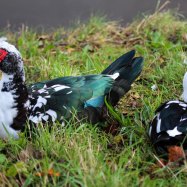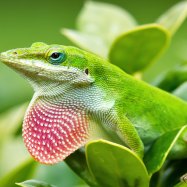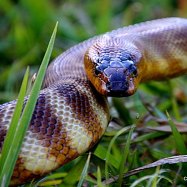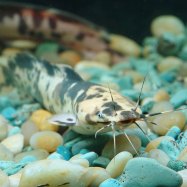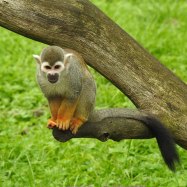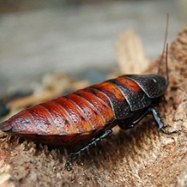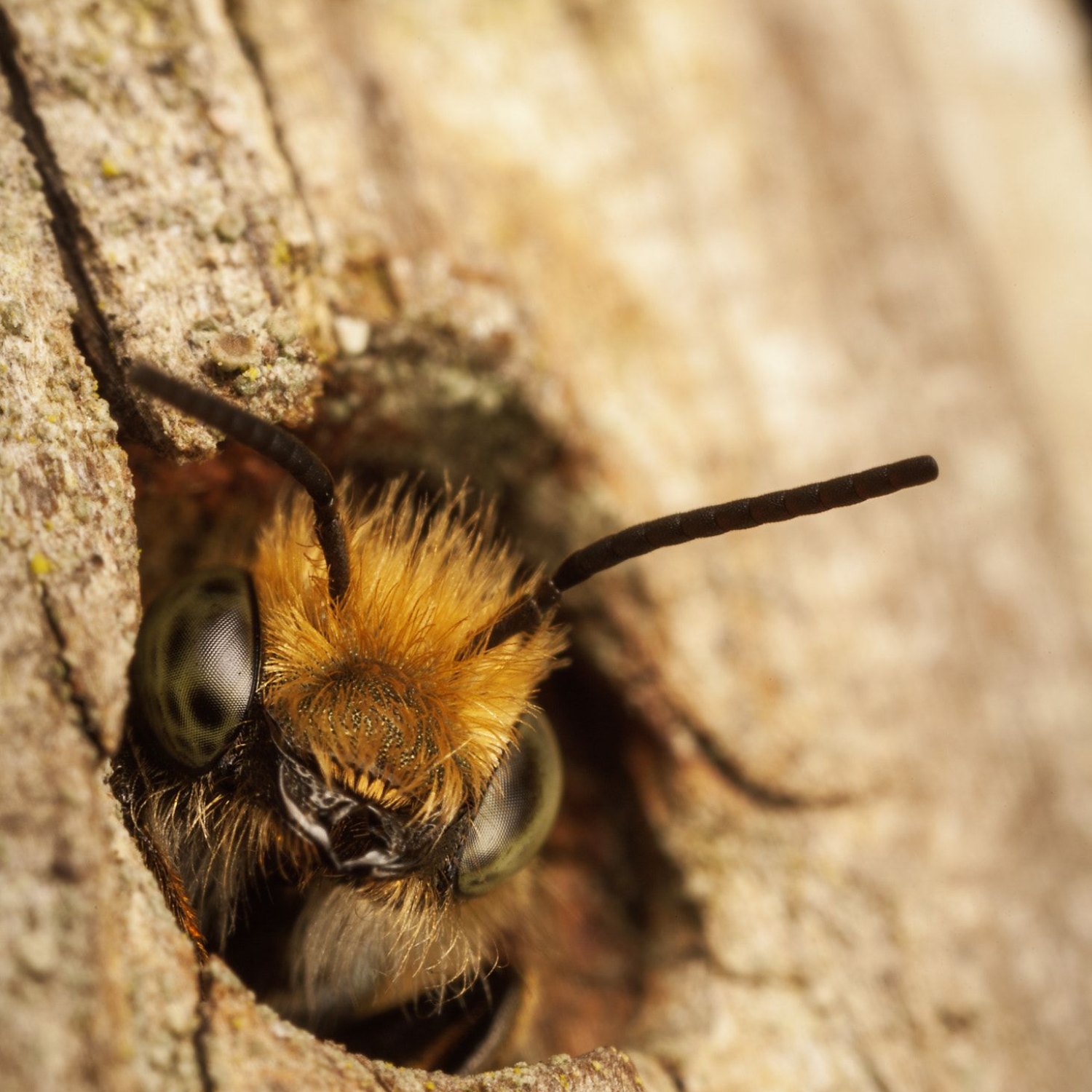
Mason Bee
3 to 14 mm
Introducing the Mason Bee, a fascinating insect with a unique approach to pollination. These small to medium-sized bees range from 3 to 14 mm in length and can be found in North America, Europe, and Asia. Belonging to the Megachilidae family, these stout-bodied bees are essential pollinators for crops and wildflowers. Keep an eye out for these tiny but mighty creatures in your garden!
Animal Details Summary:
Common Name: Mason Bee
Kingdom: Animalia
Habitat: Various habitats including forests, woodlands, meadows, gardens, and urban areas
The Fascinating World of Mason Bees
Nature never ceases to amaze us with its remarkable creatures, big and small. Among the many wonders of the animal kingdom, there is one insect that often goes unnoticed, yet plays a crucial role in our ecosystem – the Mason Bee. These bees may not have the fame of honeybees or the vibrancy of butterflies, but they are essential pollinators and have a fascinating lifestyle that is worth exploring.Meet the Mason Bee
Scientifically known as Osmia, the Mason Bee is a genus of solitary bees belonging to the family Megachilidae Mason Bee. As their common name suggests, these bees are known for their ability to build nests using mud or chewed plant material. This unique behavior sets them apart from other bees, making them a distinctive and intriguing species.The Big Family of Mason Bees
The Mason Bee family is made up of over 300 species, with varying characteristics and habits. They are found worldwide, with a significant presence in North America, Europe, and Asia. These bees have adapted to various habitats, which include forests, woodlands, meadows, gardens, and even urban areas. This adaptability has contributed to their widespread distribution, making them an integral part of many ecosystems.Appearance and Body Structure
Mason Bees are small to medium-sized insects with stout and compact bodies. They can vary in size, ranging between 3 to 14 mm, depending on the species. These bees are mostly dark brown or black, but some species can have striking colors such as blue, green, or metallic hues Maltese. Their wings are translucent and have a characteristic buzz when in flight.The Pollinator's Diet
Like most bees, Mason Bees feed on nectar and pollen. They have a unique method of collecting pollen from flowers, known as "buzz pollination." The bee will grip onto a flower and vibrate its flight muscles, creating a humming sound that shakes the pollen loose. This process helps the bee collect and spread pollen effectively.The Mason Bee Lifestyle
One of the most intriguing aspects of Mason Bees is their solitary lifestyle. Unlike honeybees that live in large colonies, Mason Bees are solitary bees that do not live in hives. They tend to live alone, although they may build their nests close to each other within a suitable nesting site. This makes them less aggressive than other bees, as they do not need to protect a large colony.Nesting Habits
As their name suggests, Mason Bees are expert builders and use mud or chewed plant material to construct their nests. They prefer to nest in pre-existing holes in wood, such as old beetle tunnels or hollow stems of plants. The female bee will gather mud or plant material and shape it into small, sealed compartments within the nest. These compartments serve as individual cells that the female will fill with pollen and lay an egg. Once the cells are filled, she will seal them, creating a protective cocoon for the developing bee.The Importance of Mason Bees
Mason Bees play a vital role in pollination, making them essential to the health and growth of many plant species. As solitary bees, they do not have the added task of producing honey or protecting their hives, allowing them to focus solely on pollination. They are efficient pollinators, and it is estimated that a single Mason Bee can pollinate as many flowers as 120 honeybees.Threats to Mason Bees
Despite their crucial role in pollination, Mason Bees face many threats that endanger their survival. Habitat loss and the use of pesticides in agriculture are the primary threats to this species. As solitary bees, they do not have the protection of a large colony, making them vulnerable to predators such as birds and wasps. Additionally, the decline of wildflowers and native plants also affects their food supply, making it challenging for Mason Bees to thrive.How You Can Help
The good news is, there are simple steps we can all take to help protect and support Mason Bees. Planting a mix of native wildflowers and plants can provide a diverse and plentiful food source for these bees. Instead of using chemical pesticides, opt for natural alternatives or allow natural predators to control pests. You can also provide suitable nesting sites by leaving areas of your garden or yard untouched or creating artificial nesting boxes.The Miracle of Mason Bees
In our fast-paced world, we often overlook the small creatures that play such a significant role in our ecosystem. Mason Bees may not be flashy or well-known, but they are a miracle of nature. These solitary bees have a unique and fascinating lifestyle and are essential pollinators that contribute to the growth and health of our environment. By learning more about them and taking simple steps to protect them, we can all do our part in preserving these incredible creatures.

Mason Bee
Animal Details Mason Bee - Scientific Name: Osmia
- Category: Animals M
- Scientific Name: Osmia
- Common Name: Mason Bee
- Kingdom: Animalia
- Phylum: Arthropoda
- Class: Insecta
- Order: Hymenoptera
- Family: Megachilidae
- Habitat: Various habitats including forests, woodlands, meadows, gardens, and urban areas
- Feeding Method: Nectar and pollen
- Geographical Distribution: Worldwide
- Country of Origin: Not specific to one country
- Location: North America, Europe, and Asia
- Animal Coloration: Mostly dark brown or black, but can vary depending on the species
- Body Shape: Small to medium-sized with stout bodies
- Length: 3 to 14 mm
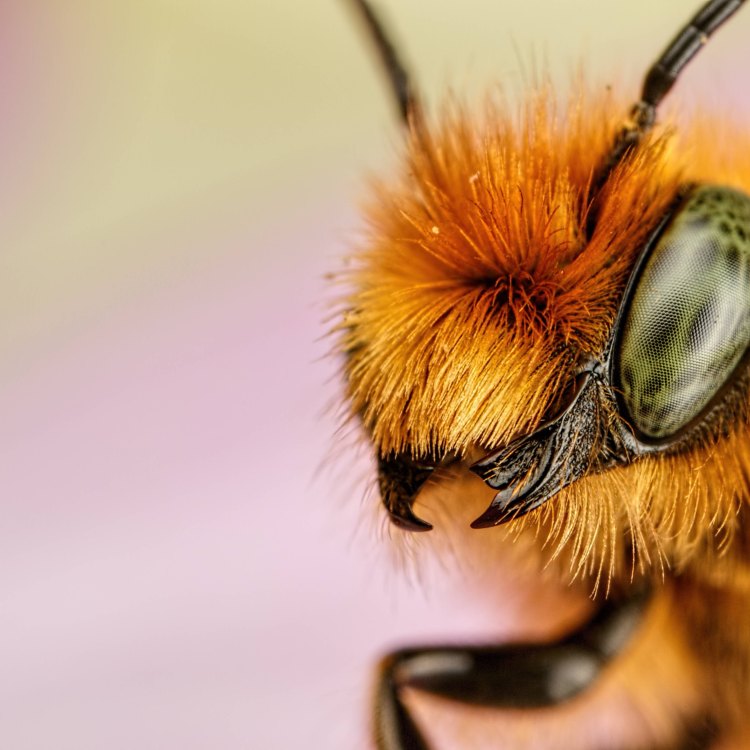
Mason Bee
- Adult Size: 3 to 14 mm
- Average Lifespan: Approximately 1 year
- Reproduction: Sexual
- Reproductive Behavior: Females construct and provision nests
- Sound or Call: No distinctive sound or call
- Migration Pattern: Non-migratory
- Social Groups: Solitary bees, but nesting aggregations can occur
- Behavior: Active during the day and pollinates various flowering plants
- Threats: Habitat loss, pesticide use, climate change
- Conservation Status: Depends on the species, but many are not considered endangered
- Impact on Ecosystem: Important pollinators of flowering plants
- Human Use: Some species are managed for crop pollination
- Distinctive Features: Females construct nests using mud or plant resins
- Interesting Facts: Mason bees are efficient pollinators and can pollinate more flowers per unit of time compared to honeybees
- Predator: Birds, spiders, and other insects
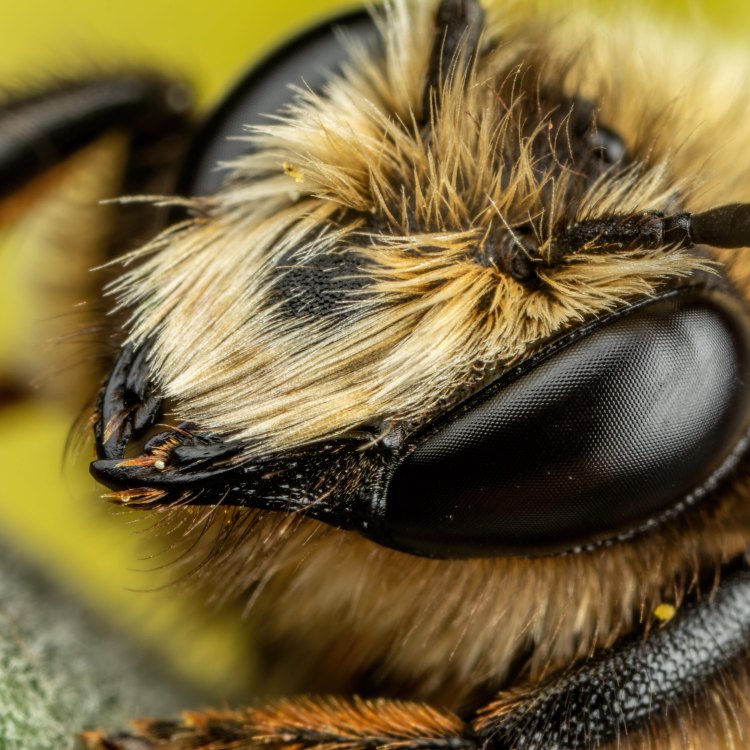
Osmia
The Amazing World of Mason Bees: Nature's Little Pollination Heroes
When you think of bees, the first thing that probably comes to mind is the yellow and black striped honeybee. However, there is another type of bee that is just as important, but often goes unnoticed - the mason bee.Mason bees, also known as orchard bees or blue orchard bees, are a diverse group of bees that belong to the genus Osmia. There are over 140 species of mason bees found worldwide, with about 60 species residing in North America PeaceOfAnimals.Com. These hardworking insects are known for being efficient pollinators and play a crucial role in maintaining the balance of our ecosystem.
In this article, we will delve into the fascinating world of mason bees, exploring their unique features, behaviors, and importance in our environment.
The Basics: Size, Lifespan, and Reproduction
Mason bees are small to medium-sized bees, with an average size ranging from 3 to 14 millimeters. This is significantly smaller than honeybees, which can grow up to 20 millimeters in size. Despite their tiny size, mason bees are some of the most effective pollinators in the insect world.In terms of lifespan, mason bees have a relatively short lifespan, living for about 1 year on average. However, this varies depending on the species and environmental conditions. Some species can live for up to 2 years, while others may only live for a few months.
Unlike honeybees, which reproduce through swarming and colony division, mason bees reproduce sexually Mealybug. This means that a male bee mates with a female, and she then uses her fertilized eggs to create new offspring. This can occur multiple times throughout the bee's lifespan, with the female storing the sperm for future use.
The Unique Reproductive Behavior of Mason Bees
One of the most distinctive features of mason bees is their reproductive behavior. Unlike other bee species, where the female lays eggs in communal nests, mason bees are solitary bees. This means that each female bee constructs her own individual nest and provisions it with food for her offspring.Females begin their nesting behavior by seeking out suitable burrows or crevices, such as holes in trees, reeds, or even abandoned snail shells. They then use mud, plant resins, or chewed-up leaves to construct individual chambers within the nest and lay their eggs inside.
The female mason bee is also responsible for collecting and providing food for her offspring. She sources nectar and pollen from nearby flowering plants and mixes it with her saliva to create a nutritious paste that she places inside each chamber as food for her developing larvae.
This incredible behavior not only showcases the intelligence and resourcefulness of mason bees, but it also ensures that each offspring has enough food and space to develop and thrive.
The Unremarkable Sound of Mason Bees
When it comes to their sound or call, mason bees are rather unremarkable. Unlike honeybees, which communicate through a buzzing sound, mason bees do not have a distinctive sound or call that they use to communicate with each other.This is because mason bees are solitary insects and do not live in large, communal colonies. Therefore, they do not need to communicate with each other in the same way that honeybees do to coordinate their activities.
However, despite not having a unique sound, mason bees are still crucial pollinators that play a vital role in our ecosystem.
A Non-Migratory Lifestyle
One interesting fact about mason bees is that they do not participate in migratory patterns. Unlike some other insects, such as monarch butterflies, that travel long distances to seek suitable breeding and feeding grounds, mason bees do not migrate.They typically remain in the same area throughout their lives, seeking out food and shelter in their immediate surroundings. This is why it is essential to have a diverse range of flowering plants and nesting sites in the local environment to support mason bee populations.
The Solitary Yet Social Life of Mason Bees
As mentioned earlier, mason bees are solitary insects, meaning that they do not live in large colonies like honeybees. However, this does not mean that they are entirely antisocial.Mason bees can still live in nesting aggregations, where female bees construct their nests close to each other. This is beneficial because it allows for increased mating opportunities and easier access to food sources.
Furthermore, male mason bees also have a unique way of socializing. They gather in large groups near the entrance to the female's nests, waiting for an opportunity to mate. This behavior is known as a "mating aggregation" and is quite common among solitary bee species.
An Active Role in Pollination
One of the most significant contributions of mason bees to our ecosystem is their role in pollination. As they go from flower to flower collecting nectar and pollen, they transfer pollen grains from the male part of the flower to the female part, enabling the plants to bear fruit and reproduce.Unlike honeybees, which primarily focus on collecting nectar, mason bees are much more efficient pollinators. They tend to visit a broader range of flowers and pollinate them more thoroughly, making them crucial to maintaining the diversity and health of our natural habitats.
Threats to Mason Bees and Their Conservation Status
Unfortunately, like many other bee species, mason bees are facing numerous threats to their survival. The most significant threat is the loss of suitable habitats, such as wildflower meadows, due to human activity and urbanization. This restricts their access to food sources and nesting sites, making it challenging for their populations to thrive.Pesticide use is another significant threat to mason bees. The chemicals used in agriculture and gardening can be harmful to bees and other pollinators. When bees come into contact with these chemicals, they can become disoriented and even die.
Climate change is also a growing concern for mason bees. As temperatures and weather patterns shift, it can affect the timing of flowering plants, disrupting the natural pollination process. This can lead to a decline in food sources for mason bees and other pollinators.
As for their conservation status, it ultimately depends on the species. Some mason bee species, such as the blue orchard bee, are managed and used for crop pollination, making them less likely to be endangered. However, many other species are not considered endangered or threatened, as they are not well-studied and their populations may be declining without our knowledge.
The Impact of Mason Bees on Our Ecosystem
Mason bees may be small, but their impact on our ecosystem is immense. As efficient pollinators, they play a crucial role in maintaining the biodiversity of our natural habitats. Without them, there would be a significant decline in the number of flowering plants and the food sources available for other animals.Furthermore, as solitary bees, mason bees do not produce honey like honeybees. This makes them less susceptible to diseases and parasites, which can easily spread in dense, crowded bee colonies. This also makes them important pollinators for wild plants, as honeybees primarily pollinate domesticated crops.
Human Use of Mason Bees
Given their exceptional pollination abilities, some species of mason bees are now being managed and used for commercial crop pollination. Farmers and gardeners can purchase or rent mason bee houses and release them into their fields to boost pollination and increase crop yields.Furthermore, many people have begun to keep mason bees in their own backyards as a way to support local bee populations and encourage natural pollination in their gardens. This can be a rewarding and educational experience for families and individuals, as they observe the fascinating behaviors of these little pollinators.
Distinctive Features and Interesting Facts
Mason bees may not have a unique sound or call, but they do have distinctive physical features. Their bodies are typically black or metallic blue, and some species have colorful hairs on their heads and thorax. One of their most notable features is that females have mandibles specifically adapted for collecting and shaping mud or resin for their nests.Additionally, mason bees are incredibly efficient pollinators. Studies have shown that they can pollinate up to 100 times more flowers per unit of time compared to honeybees. This is because they tend to focus on one type of flower at a time, rather than moving from flower to flower indiscriminately.
Finally, like all creatures, mason bees also have natural predators. Birds, spiders, and other insects, such as wasps and praying mantises, often prey on mason bees. However, these little insects have also evolved defense mechanisms, making them less attractive to predators. For example, many species of mason bees have hard, thick outer shells, making it difficult for predators to reach the soft inner body.
In Conclusion
Mason bees may not be as well-known as their honeybee counterparts, but they are just as vital to our ecosystem. Their unique features, behaviors, and importance in pollination make them an essential species to protect and support for the well-being of our planet.As we continue to face threats like habitat loss, pesticide use and climate change, it is crucial to raise awareness about the role of mason bees and take action to protect and conserve them. Whether it be by creating welcoming environments for them in our backyards or advocating for their protection in the wild, we can all play a part in preserving these incredible pollinators.
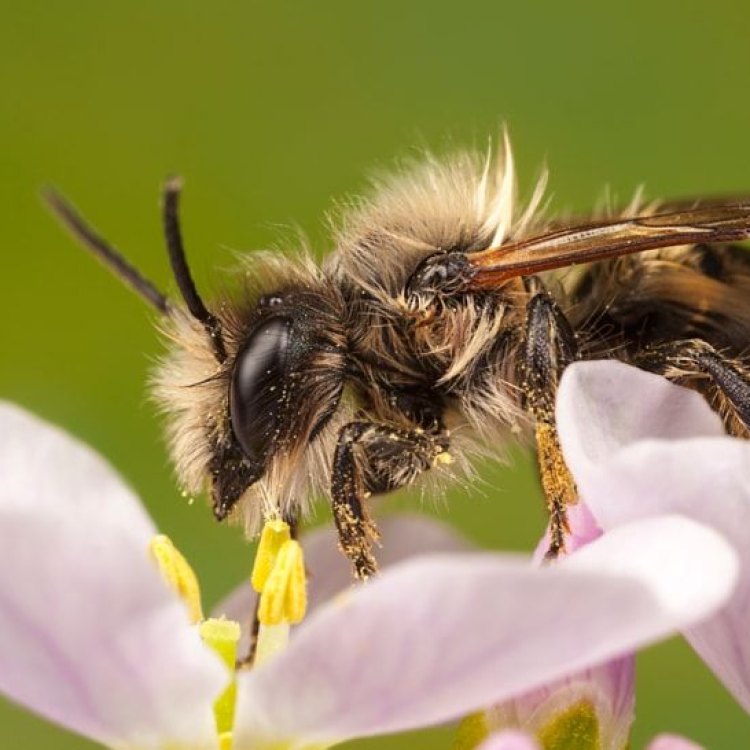
The Fascinating World of Mason Bees
Disclaimer: The content provided is for informational purposes only. We cannot guarantee the accuracy of the information on this page 100%. All information provided here may change without prior notice.


